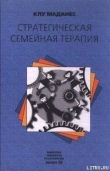
Текст книги "ПСИХИКА И ЕЕ ЛЕЧЕНИЕ: Психоаналитический подход"
Автор книги: Вейкко Тэхкэ
Жанры:
Психология
,сообщить о нарушении
Текущая страница: 43 (всего у книги 45 страниц)
Rosenfeld, H. (1952), Transference-phenomena and transference analysis in an acute catatonic schizophrenic patient. Internat, J. Psycho-Anal., 33:457-464.
(1954), Considerations regarding the psychoanalytic approach to acute and chronic schizophrenia. Internat, J. Psycho-Anal., 35:135-140.
(1965), Psychotic States. New York: International Universities Press. Rycroft, C. (1968), A Critical Dictionary of Psychoanalysis. London: Nelson. Sandier, J. (1960), On the concept of the superego. The Psychoanalytic Study of the Child. 15:128-162. New York: International Universities Press. *
(1976), Countertransference and role-responsiveness. Internat. Rev. Psycho-Anal., 3:43-47.
(1986), Comments on the self and its objects. In: Self and Object Constancy, ed. R. Lax, S. Bach, & J. A. Burland. New York: Guilford Press.
(1987), The concept of projective identification. In: Projection, Identification, Projective Identification, ed.J. Sandier. Madison, CT: International Universities Press, pp. 13-26.
(1988), Psychoanalytic technique and «Analysis terminable and interminable.» Internat, J. Psycho-Anal., 69:335-345.
Holder, A., & Meers, D. (1963). The ego ideal and the ideal self. The Psychoanalytic Study of the Child, 18:139-158. New York: International Universities Press.
Joffe, W. G. (1965), Notes on childhood depression. Internat. J. Psycho-Anal., 46:88-96.
(1969), Towards a basic psychoanalytic model. Internat, J. Psycho-Anal., 50:79-90.
Rosenblatt, B. (1962), The concept of the representational world. The Psychoanalytic Study of the Child, 17:128-145. New York: International Universities Press.
Saul, L.J. (1962), The erotic transference. Psychoanal. Quart.. 31:54-61.
Schachter, J. (1990), Post-termination patient-analyst contact: I. Analyst's attitudes and experiences; II. Impact on patients. Internat. J. Psycho-Anal., 71:475-485.
Schafer, R. (1959), Generative empathy in the treatment situation. Psychoanal. Quart., 28:342-373.
(1964), The clinical analysis of affects. J. Amer. Psychoanal. Assn., 12:275-299.
(1968), Aspects of Internalization. New York: International Universities Press.
(1972), Internalization: Process or Fantasy? The Psychoanalytic Study of the Child. 27:411-446. New York: Quadrangle Books. i
(1976), A New Language for Psychoanalysis. New Haven, CT: Yale University Press.
Schaffer, N. D. (1982), The borderline patient and affirmative interpretation. Bull. Menn. Clinic. 50:148-162.
Schimek, J. G. (1975), The interpretations of the past. J. Amer. Psychoanal. Assn., 23:845-865.
Schlesinger, N., & Robbins, F. (1974), Assessment and follow-up in psycho-analysis. J. Amer. Psychoanal. Assn., 22:542-567.
Schwartz, F. (1981), Psychic structure. Internat. J. Psycho-Anal., 62:61-72.
Schwing. G. (1940), A Way to the Soul of the Mentally 111. New York: International Universities Press, 1954.
Searles, H. F. (1965), Collected Papers on Schizophrenia and Related Subjects. New York: International Universities Press.
(1979), Countertransference and Related Subjects. New York: International Universities Press.
(1986), My Work with Borderline Patients. Northvale, N J: Jason Aronson.
Sechehaye, M. A. (1951), Symbolic Realization. New York: International Universities Press.
Segal, H. (1973), An Introduction to the Work of Melanie Klein. New York: Basic Books. Shapiro, T. (1974), The development and distortions of empathy. Psychoanal. Quart., 43:4-25.
Sifneos, P. (1973), The prevalence of «alexithymic» characteristics in psychosomatic patients. Psychother. & Psycho-som., 22:255-262.
Slatker, E. (1987), Countertransference. Northvale, NJ: Jason Aronson. Spiegel. L. A. (1951), Review of contributions to a psychoanalytic theory of adolescence. The Psychoanalytic Study of the Child, 6:375-393. New York: International Universities Press.
Spitz, R. A. (1945), Hospitalism: An inquiry into the genesis of psychiatric conditions in early childhood. The Psychoanalytic Study of the Child, 1:53-74. New York: International Universities Press.
(1946), Anaclitic depression: An inquiry into the genesis of psychiatric conditions in early childhood.' The Psychoanalytic Study of the Child, 2:113-117. New York: International Universities Press.
(1956), Some observations on psychiatric stress in infancy. In: Fifth Annual Report on Stress, ed. H. Selye & G. Heuser. New York: M.D. Publications, pp. 193-204.
(1959), A Genetic Field Theory of Ego Formation. New York: International Universities Press.
(1965), The First Year of Life. New York: International Universities Press. *
(1966), Metapsychology and direct infant observation. In: Psychoanalysis—A General Psychology: Essays in Honor of Heinz Hartmann, ed. R. M. Loewenstein, L. H. Newman, M. Schur, & A. J. Solnit. New York: International Universities Press, pp. 123-151.
Spruiell, V. (1974), Theories of the treatment of narcissistic personalities. J. Amer. Psychoanal. Assn., 22:268-278.
Sterba, J. (1934), The fate of ego in analytic therapy. Internal. J. Psycho-Anal., 15:117-126.
Stern, D. (1985), The Interpersonal World of the Infant. New York: Basic Books.
Stewart, W. A. (1963), An inquiry into the concept of working through. J. Amer. Psychoanal. Assn., 11:474-499.
Stoller. R. J. (1979), Sexual Excitement. Dynamics of Erotic Life. New York: Pantheon.
Stolorow, R. D., & Lachmann, F. M. (1980), Psychoanalysis of Developmental Arrests. New York: International Universities Press.
Stone. L. (1954), The widening scope of indications for psychoanalysis, j. Amer. Psychoanal. Assn., 2:567-594.
Strachey, J. (1934), The nature of the therapeutic action in psycho-analysis. Internal, j. Psycho-Anal., 15:127-159.
Tahka, V. (1970), Psykoterapian perusteet. (Basic principles of psychotherapy.) Porvoo & Helsinki: Werner Soderstrom.
(1974a), What is psychotherapy? Psychiatria Fennica, 5:163-170.
(1974b), Mourning work and working through. Psychiatria Fennica, 5:171-179.
(1976). On the curative factors of psychotherapy. Acta Psy-chiat. Scand., Supplementum 265:41-42. Copenhagen: Munksgaard.
(1977), On some narcissistic aspects of self-destructive behaviour and their influence on its predictability. In: Proceeding of IX Congress on Suicide Prevention and Crisis Intervention, pp. 250-253. Helsinki: Finnish Association for Mental Health.
(1979), Psychotherapy as a phase-specific interaction: Towards a general psychoanalytic theory of psychotherapy. Scand. Psychoanal. Rev., 2:113-132.
(1984). Psychoanalytic treatment as a developmental continuum: Considerations on disturbed structuralization and its phase-specific encounter. Scand. Psychoanal. Rev.. 7:133-159.
Tansey, M. J., & Burke, W. F. (1989), Understanding Coun-tertransference. Hillsdale, NJ: Analytic Press.
Ticho, E. (1972), Termination of psychoanalysis: Treatment goal's, life goals. Psychoanal. Quart.. 41:315-333.
Tolpin, M. (1971), On the beginnings of a cohesive self. The Psychoanalytic Study of the Child. 26:316-354. New York: Quadrangle Books.
Tolpin, P. (1978). The borderline personality: Its makeup and analyzability. In: Advances in Self Psychology, ed. A. Goldberg. New York: International Universities Press, pp. 299-316.
Volkan, V. U. (1976). Primitive Internalized Object Relations. New York: International Universities Press.
(1981), Linking Objects and Linking Phenomena. New York: International Universities Press.
(1982), Identification and related psychic events. In: Curative Factors in Dynamic Psychotherapy, ed. S. Slipp. New York: McGraw-Hill, pp. 153-170.
(1985), Suitable targets for externalization and schizophrenia. In: Towards a Comprehensive Model of Schizophrenic Disorders, ed. D. B. Feinsilver. New York: Analytic Press, pp. 125-153.
(1987), Six Steps in the Treatment of Borderline Personality Organization. Northvale, NJ: Jason Aronson.
Wallerslein. R. S. (1967), Reconstruction and mastery in the transference psychosis, J. Amer. Psychoanal. Assn., 15:551-583.
Webster New Universal Unabridged Dictionary, 2nd ed. (1983), New York: Simon & Schuster.
Wetzler, S. (1985), The historical truth of psychoanalytic reconstructions. Internat. Rev. Psycho-Anal., 12:187-197.
Winnicott, D. W. (1949), Hate in the countertransference. Internat. J. Psycho-Anal. 30:69-75.
(1953), Transitional objects and transitional phenomena. Internat. J. Psycho-Anal.. 34:89-97.
(1956), Primary maternal preoccupation. In: Collected Papers. New York: Basic Books, 1958, pp. 300-305.
(1958), Collected Papers. New York: Basic Books.
(1960). The theory of the parent-infant relationship. In: The Maturational Processes and the Facilitating Environment. New York: International Universities Press, pp. 37-55.
(1963), The development of the capacity for concern. Bull. Menn. Clinic,27:167-176.
(1965), The Maturational Processes and the Facilitating Environment. London: Hogarth Press.
(1967), Mirror-role of mother and family in child development. In: The Predicament of the Family, ed. P. Lomas. London: Hogarth Press, pp. 26-33.
(1971). Playing and Reality. London: Tavistock.
Wolfenstein, M. (1966), How is mourning possible? The Psychoanalytic Study of the Child, 21:93-123. New York: International Universities Press.
(1969), Loss, rage, and repetition. The Psychoanalytic Study of the Child, 21:93-123. New York: International Universities Press.
Zetzel, E. R. (1956). The concept of transference. J. Amer. Psychoanal. Assn., 1:526-537.








